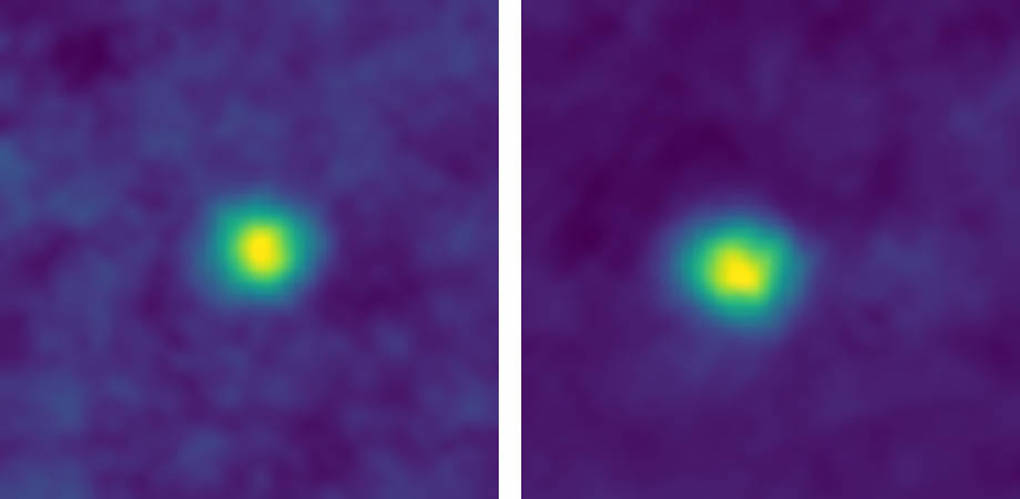
While the rest of the world got busy checking out the photos of Starman (SpaceX’s dummy astronaut riding a Tesla roadster to Mars), a NASA space probe went about taking snaps of objects while it was around 6.12 billion kilometers (3.79 billion miles) away from Earth.
Moving on from its Pluto mission, New Horizons is now en route to the Kuiper Belt, right at the fringes of the solar system. It’s target is a Kuiper Belt object (KBO) known as 2014 MU69. While on its way, the spacecraft turned its Long Range Reconnaissance Imager on a cluster of these KBOs and took photos, becoming the first spacecraft ever to take pictures that far from Earth.

This historic photos of KBOs 2012 HZ84 and 2012 HE85 were taken on Dec. 5, 2017, while New Horizons was roughly 41 times as far from Earth than the Earth is from the Sun. The images were the closest ever taken of the KBOs.
The new images broke the record of another snap taken by the camera of New Horizons of the so-called “Wishing Well” star cluster (seen below), just two hours earlier on the same day while the imager was on a routine calibration.

New Horizons is no stranger to beautiful photos from space. From 2015 to 2016, the space probe had sent the most detailed images of Pluto ever as part of its year-long data dump when it reached the former ninth planet. These photos mesmerized laypeople around the world while at the same time giving astronomers material to study the dwarf planet’s surface.
New Horizons is scheduled to fly by its target in the beginning of 2019. The event will be the farthest planetary encounter since humankind sent probes into space.

Although it isn’t the first spacecraft to have gone that far away from the Earth — such distance was also traveled by the Voyager 1 and 2, and Pioneer 10 and 11 — New Horizons was the only one that’s camera was still operational. The space probe now keeps itself in hibernation as it journeys towards its objective KBOs, where it will continue to send never-before-seen images of the solar system’s most distant space objects.